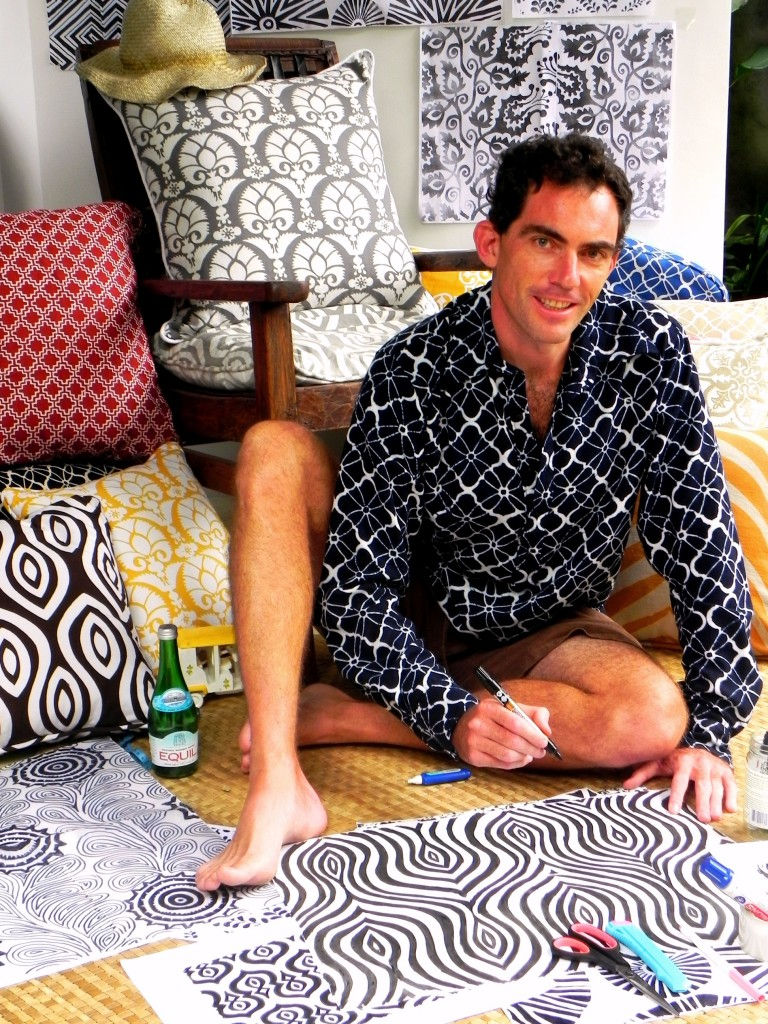The Art of Batik ... An American Couple Relocates to Bali and Starts a New Company
- PLC

- Mar 4, 2019
- 3 min read
Updated: Dec 18, 2020
Do hot months of summer conjure up visions of indoor-outdoor living in far off tropical locations? Palm trees, coconuts, turquoise waters, and colorful skies? Above all, cat naps in casual comfort surrounded by nature? This simple life has its own design style – a décor that integrates its natural resources such as bamboo, cane, exotic woods, bark, linen, and clay. These neutral-toned materials make a perfect backdrop for colorful batik fabrics.
Batik is a wax-resist dyeing technique that is applied to cloth (which has first been washed, soaked and beaten with a mallet). “Wax-resist” just means that color dye cannot penetrate through the cloth wherever wax has been applied. Consequently, when the wax is removed, the color beneath it remains the same - in most cases, the original white color of the cloth.
Patterns are made by drawing dots and lines of the resist with a spouted tool called a canting or made by printing the resist with a copper stamp called a cap. Once the wax has been applied, the fabric is soaked in dye. If more colors are desired, the process is repeated. Are you having flashbacks of the Grateful Dead and tie-dyeing tee shirts in your garage basin back in the day? In theory, tie-dyeing is a distant and poorer cousin of batik-making but instead of wax-defining patterns, undefined patterns were made with the rubber bands.
The art of wax-resist dyeing dates back to 4000 B.C. Egypt. It was later practiced in China, India, Japan and Nigeria. But it has been most highly developed, and given the name “batik”, in Java, Indonesia. In Java, all the materials for the process are readily available such as cotton, beeswax and plants from which different vegetable dyes are made.
As with Oriental rugs, the motifs in batiks relate to the culture and region in which the pieces are made. For instance, dragons appear in Chinese batiks, elephants and peacocks in Iran and India, cherry blossoms and butterflies in Japan, and florals in Europe.
Batik-making on the island of Bali is relatively new, but a fast-growing industry. Many patterns are inspired by local designs and are favored by the Balnese and domestic tourists. Objects from nature, daily activities, and religious or mythological stories are common motifs. Modern batik artists express themselves freely in a wide range of subjects.
I was recently contacted by such artists, Katherine Dupps, originally from Arizona, and her husband, Rally Dupps, an architect from Nashville who started a batik company in Bali. The Duppses had originally met in Aspen and in 2002 and tested their compatibility with a backpacking trip through Southeast Asia. The test proved successful and when Rally proposed, Katherine suggested a six week trip to India instead of purchasing wedding rings.
They eventually settled in Boulder, Colorado but to quote Katherine, “When the economy bit the dust, we hit the road”. They relocated to Bali and started their company, Katherine Rally, a combination of their names. Their line of batiks is inspired by past travels and their own love of textiles and design.
Rally starts the batik process by hand-drawing patterns born from his imagination. A craftsman then creates a metal stamp from his drawings. The metal stamp is used to dip into molten wax which is then applied to raw fabric. All steps are done by hand and thus, all fabric pieces are unique and original.
Once the batik process is complete, the fabric is either made into finished goods or sold by the piece. Depending on the type of cloth, the batiks can be used on upholstery, cushions, draperies, bedding, and clothing.
Katherine Rally batiks are sold in retail locations in Australia, Sweden, Canada, India, Indonesia, and in a few stores in the States. Because of my passion for fabric, Katherine sent me a sample set of their batiks and information on how best to make them available to those interested. (Katherine Rally batiks are not sold in retail stores in California).
More photos and information can also be seen at www.katherinerally.com.

#patticowger #plcinteriors #napavalley #napaca #interiordesigner #workingwithadesigner #furniture #design #demystifyingdesign #askadesigner #bali #tropical #batik #indooroutdoor #wax #dye #patterns #ethnic #canting #java #beeswax #motifs @rallydupps @katherinedupps @katherinerallytextiles #handdraw #customdesign @naparegister
_edited.jpg)



Comments